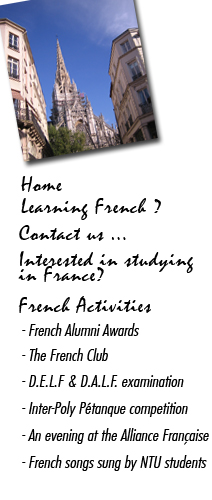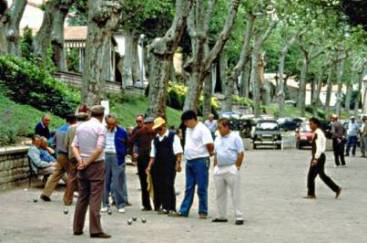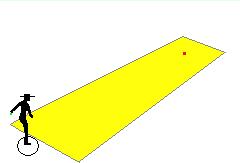

Inter-Poly Pétanque competition -
by Mr. Jean François Ghesquière
1. Pétanque - A typical French game.
2. Inter-Poly Pétanque competition.
3. Some information about the game.
1. Pétanque – A traditional French game.

Some players in France
![]() Click to view actual size
Click to view actual size
2. InterPoly / JC Pétanque competition.
The Inter-poly Tertiary Pétanque championship was held on Saturday, October 17th, at the Toa Payoh Sports Hall under the aegis of the Singapore Petanque and Sport Boule Federation.
Many students from NTU supported the two teams that represented NTU.
Our players got into the quarter finals. We congratulate the participants on their sportsmanship!
Impressed with the strong support of the students, the Singapore Petanque and Sport Boule Federation has invited NTU to become a member of the federation.
Below some pictures of the enthusiastic NTU players, supporters and team in action.

The winning team receives one point for each boule it has that is closer to the jack than any boule of the opposing team.
3. Some information regarding the game.
First, the players need to choose a flat area 3 to 4 meters wide and about 12 meters long.
The players can play one-on-one ("tête-à-tête"), or in teams of two ("doublettes") or three ("triplettes").
In doublettes and tête-à-tête, each player plays with three boules. In triplettes, each player has two boules.
The Aim of the Game
The aim of the game is very simple: each player tries to throw his or her boule as close to the jack as possible.
![]() Click to view actual size
Click to view actual size

At the beginning of the game, one player draws a circle on the ground. Each player has to stand in this circle to throw the boules. For the game to start, one player needs to throw the jack 6 to 10 meters from the circle. The jack must also be visible from this circle, or the player has to throw it again!
Once the jack has been thrown, one player from each team throws a boule. The team whose boule is closest to the jack is said to be "holding".
Winning
It is now the other team's turn. The players throw one or more boules to try to score a point. The team can choose to POINT (i.e. put its own boule closer to the jack than its opponent's) or SHOOT (i.e. hit its opponent's boule, thereby knocking it away from the jack).
Once all the boules have been thrown, the round is complete and the points are counted.
The winning team receives one point for each boule it has that is closer to the jack than any boule of the opposing team.
Copyright ©2009, GHSQ